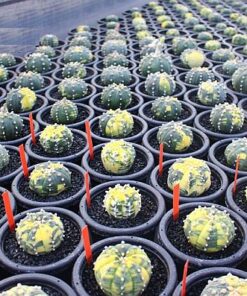Lithops Seeds Mix pack of 20 seeds, Very tiny Microscopic Seeds
₹199.00
In stock
SKU: Lithopsmix
Category: cactus and succulent seeds
Lithops Seeds or “living stones” are small succulents that look like pebbles. They are simple to grow from seeds if you have the steps. Here is how you can do it.
| Number of Seeds | 20 seeds |
|---|---|
| Temperature | Below 30C |
| Blooming Month | Oct To Feb |
| Sowing month | Oct To feb |
| Sun | Full sun except may june |
Lithops Seeds Get the Seeds and Soil
First, buy new lithops seeds from a reputable dealer. Then, acquire a pot of draining soil. Cactus soil mixed with sand would be the best. Make sure that the pot drains so that water will not stick in the soil.
Sow the Seeds
Lastly, cover the ground with a thin layer of small seeds. Lithops Seeds Don’t plant them in the ground as they need sunlight to sprout. Then, spray the ground using a spray bottle. Water the ground thoroughly but not moist.Haworthia good companion of lithops
Create a Humid Environment
To get the seeds to germinate, put the pot in a clear plastic bag or cover it. It is a warm and moist place. Put the pot in a sunny spot outside but not in the sun since it is too intense for the freshly planted seeds.
Wait and Watch
Lithops seeds will take two to eight weeks to germinate. Water the soil with a spray of water once the soil starts drying out slightly but not fully. Simply wait patiently for tiny green shoots.
Lithops Seeds Position the Pot and Scale Back on Watering
After the seeds have germinated, take off the plastic wrap. Let them acclimatize slowly to regular air. Then slowly taper off watering gradually. Water when the soil is dry right up to the touch. Too much water will rot the tender seedlings.
Lithops Seeds Give Light and TLC
Place lithops in the firm, filtered sunlight when they get old. A south window. They will be small pebbles after two months. Give them water very sparingly.
Transplanting and Continuing Care
It takes a year or so after which the lithops are grown big enough and can be planted in a fresh pot if the need arises. Place them in the well-draining soil but not too damp. Lithops do not receive fertilizer often. Just allow them to grow by themselves.
Lithops seeds are slow to develop but are well worth the wait. Be patient and your small seeds will grow into lovely little plants. Take a deep breath and let them develop!
| Color | Mix |
|---|---|
| Germination Level | Medium |
| Growth Pattern | Globular |
| Hybrid or Open Pollinated | Open Pollinated |
| Ideal location | partial sun with white net |
| Origin Country | UK |
Be the first to review “Lithops Seeds Mix pack of 20 seeds, Very tiny Microscopic Seeds” Cancel reply
You must be logged in to post a review.
Related products
cactus and succulent seeds
₹650.00
cactus and succulent seeds
Rated 5 out of 5
₹199.00
cactus and succulent seeds
₹199.00
cactus and succulent seeds
Echinocereus Rigidissimus Rubrispinus cactus seeds pack of 20 seeds
₹199.00
cactus and succulent seeds
Carnegiea gigantea (Saguaro) Seeds rare Cactus Seeds Pack of 20 seeds
₹199.00












Reviews
There are no reviews yet.